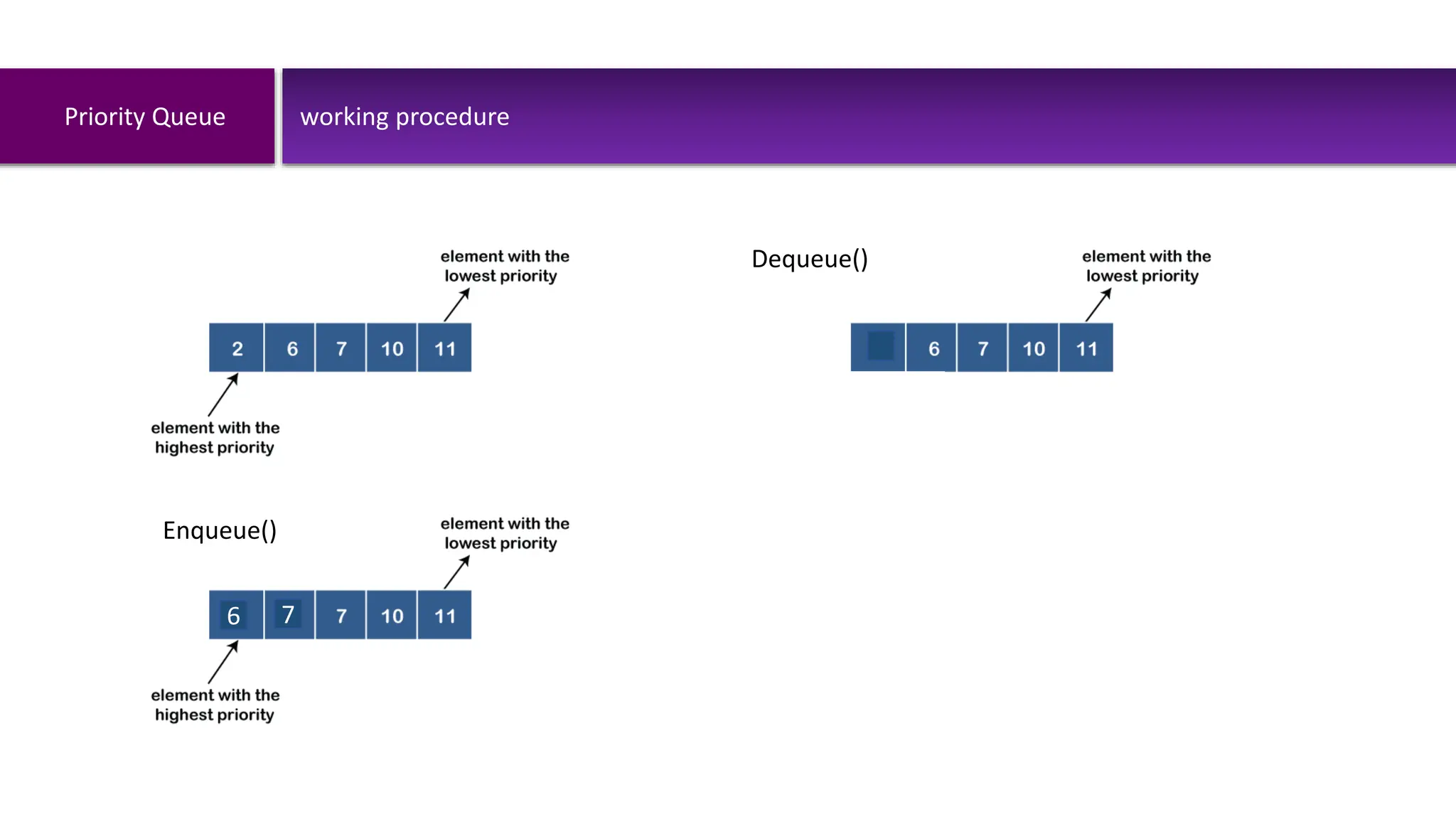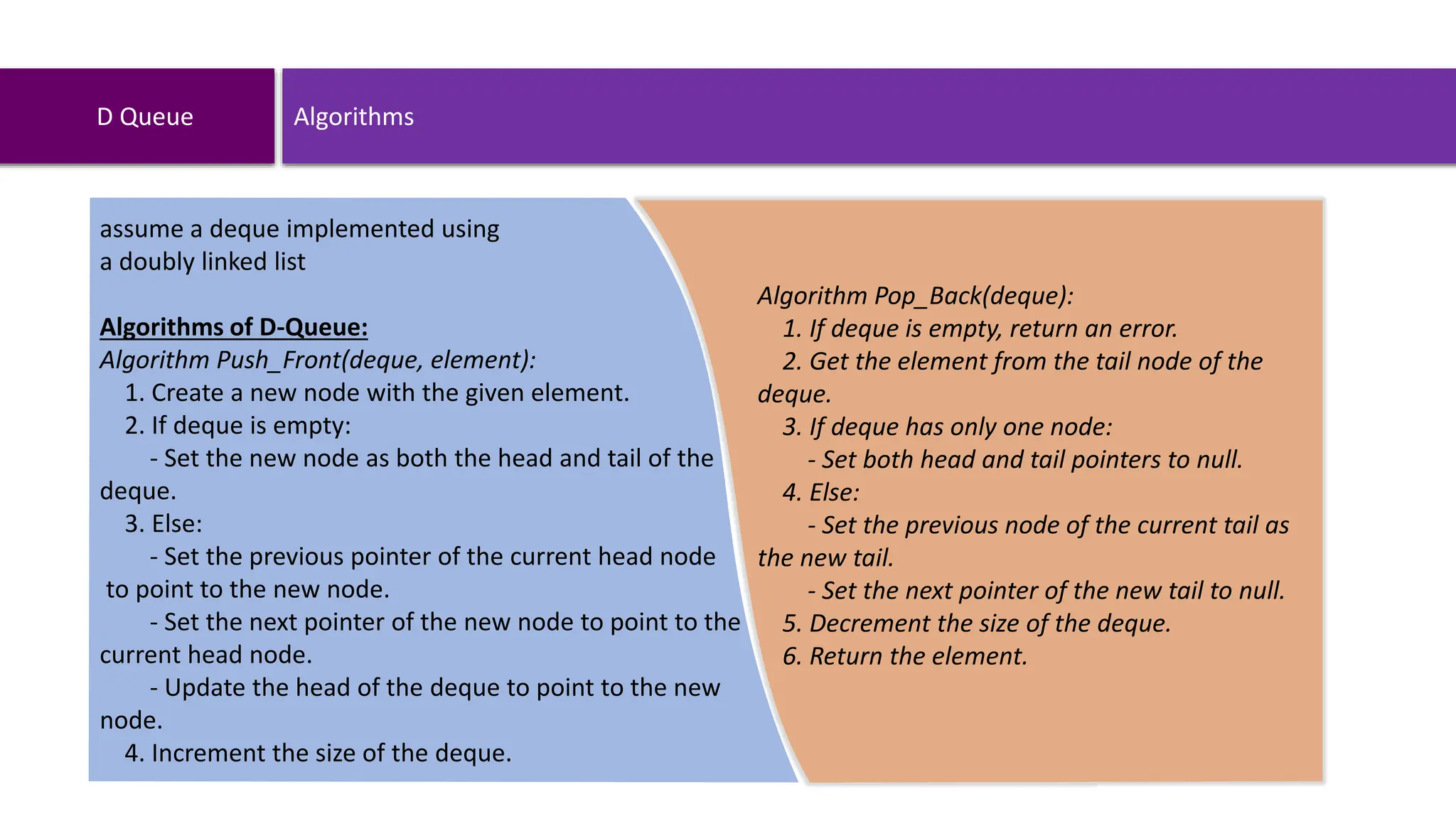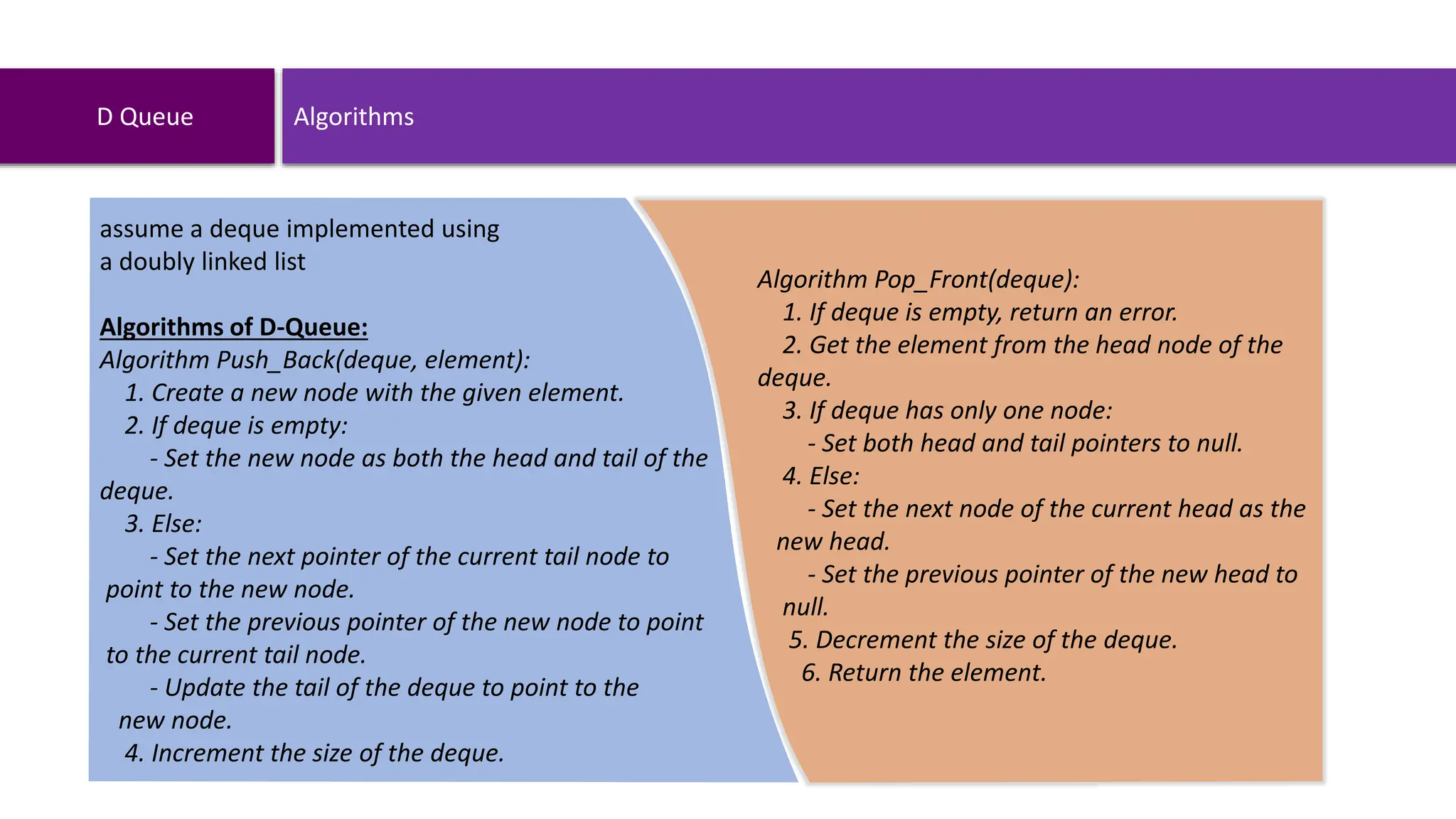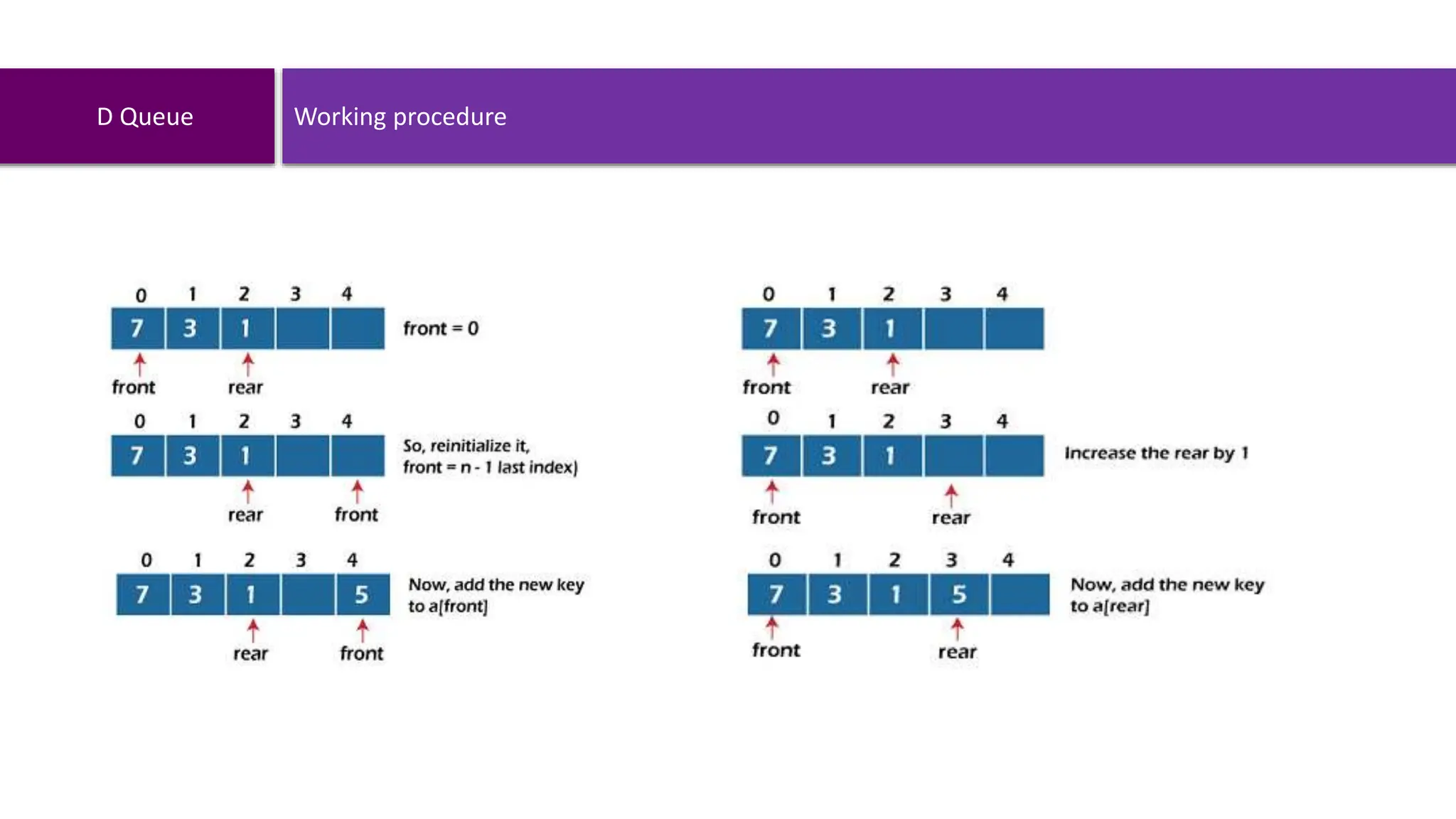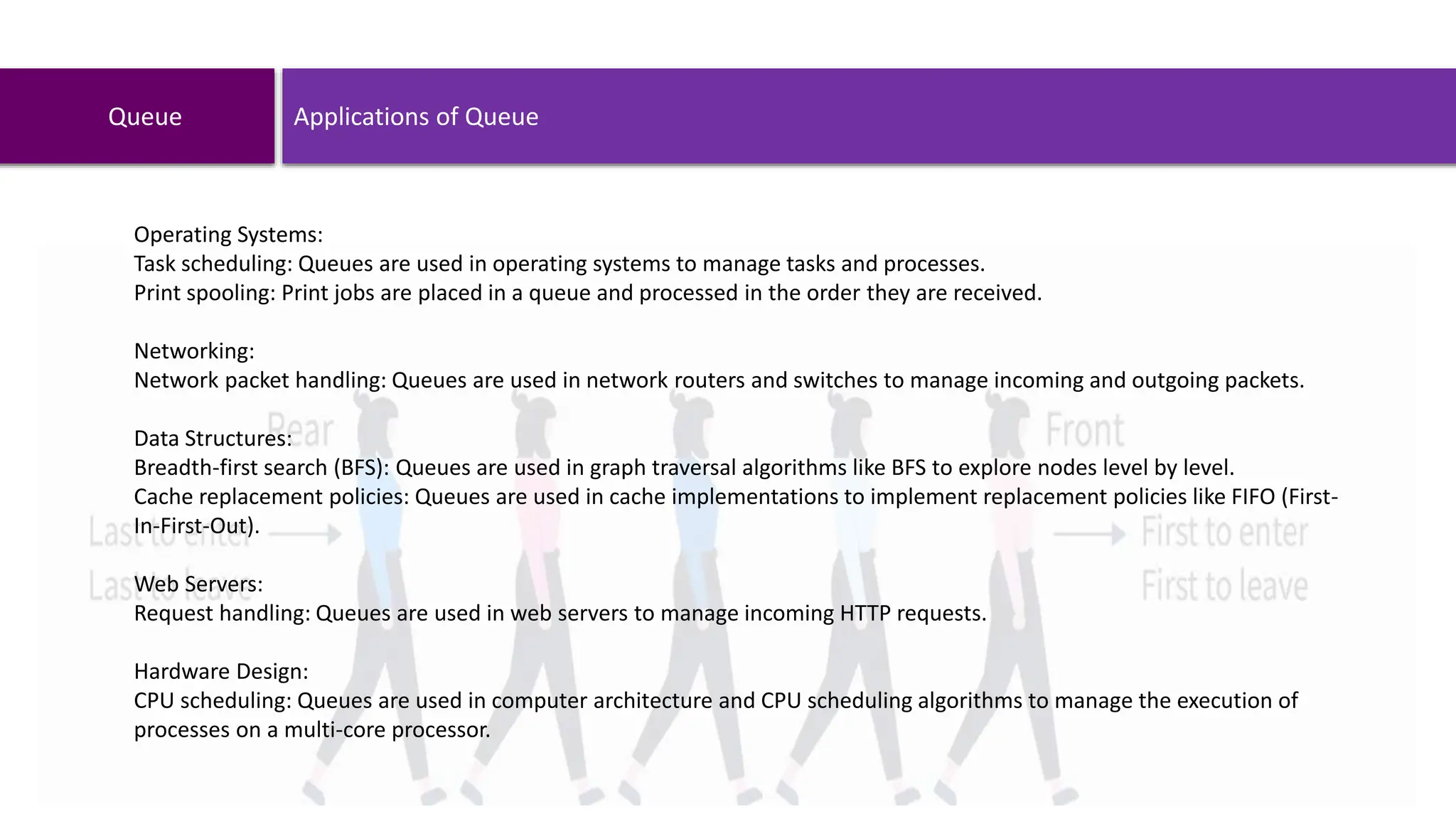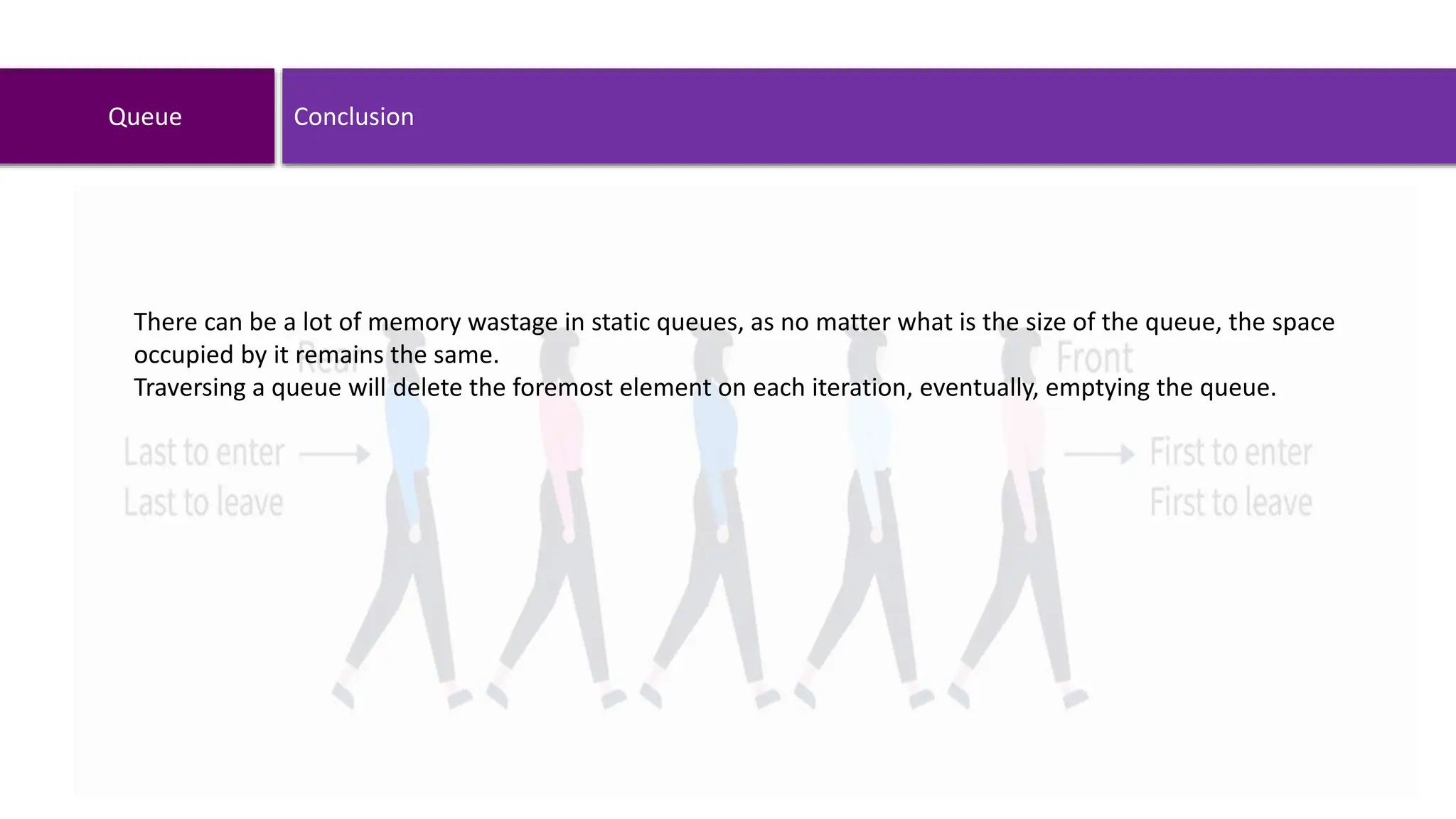This document provides an overview of queues as a linear data structure, including their types, operations, and applications. It discusses algorithms for linear and priority queues, their complexities, and the advantages and disadvantages of each type. Additionally, it highlights various applications of queues in operating systems, networking, and data structures.

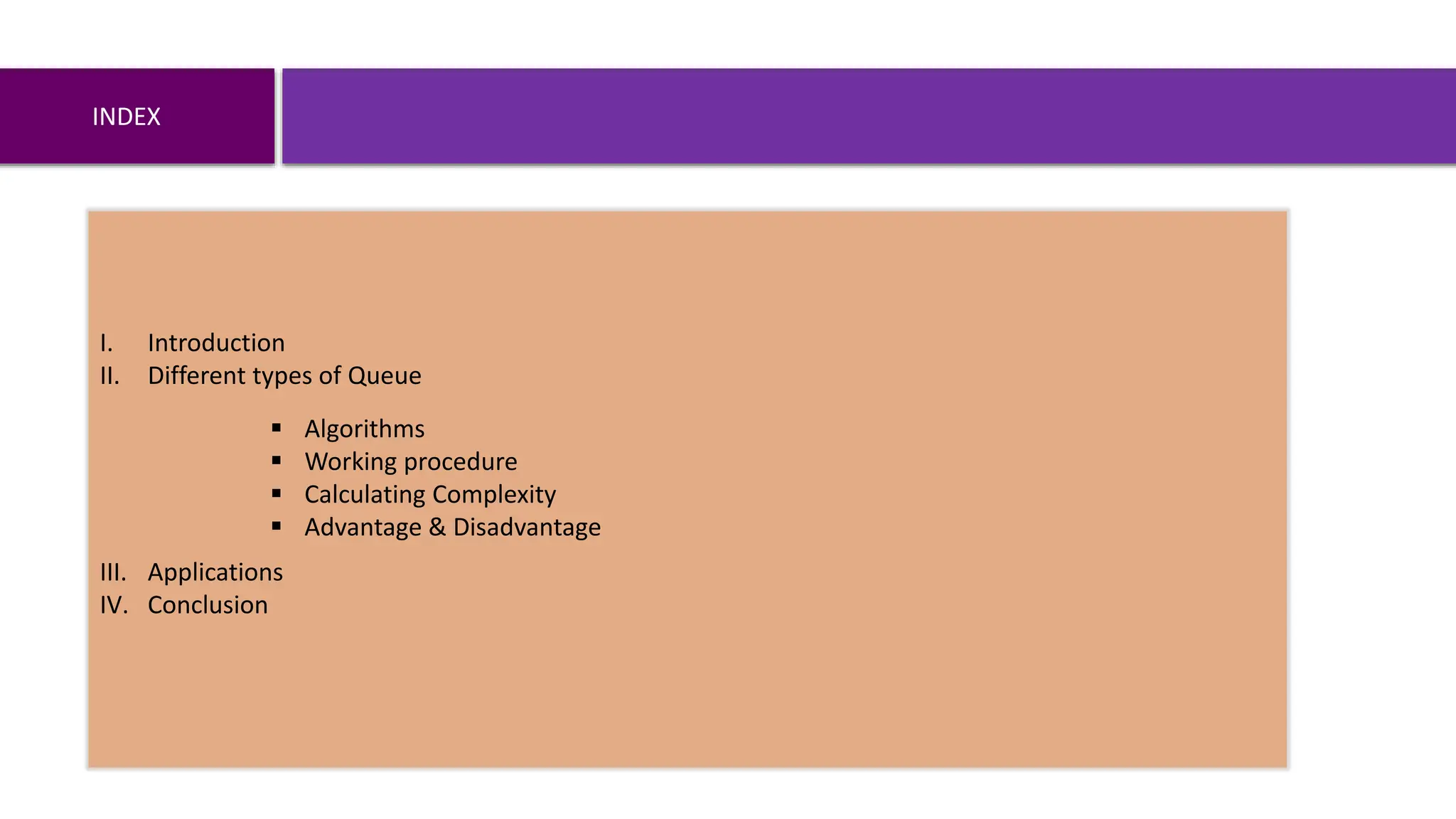

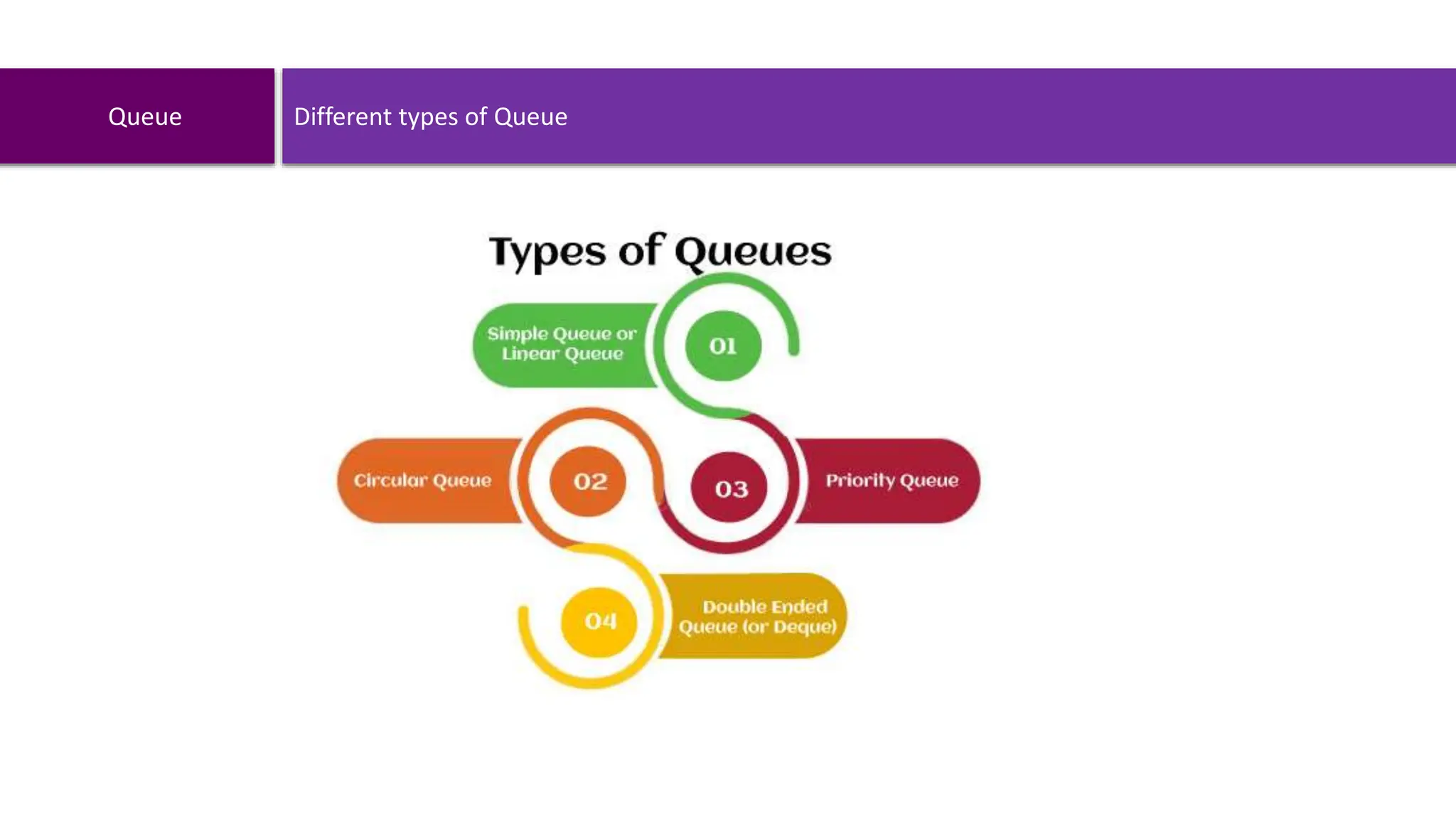
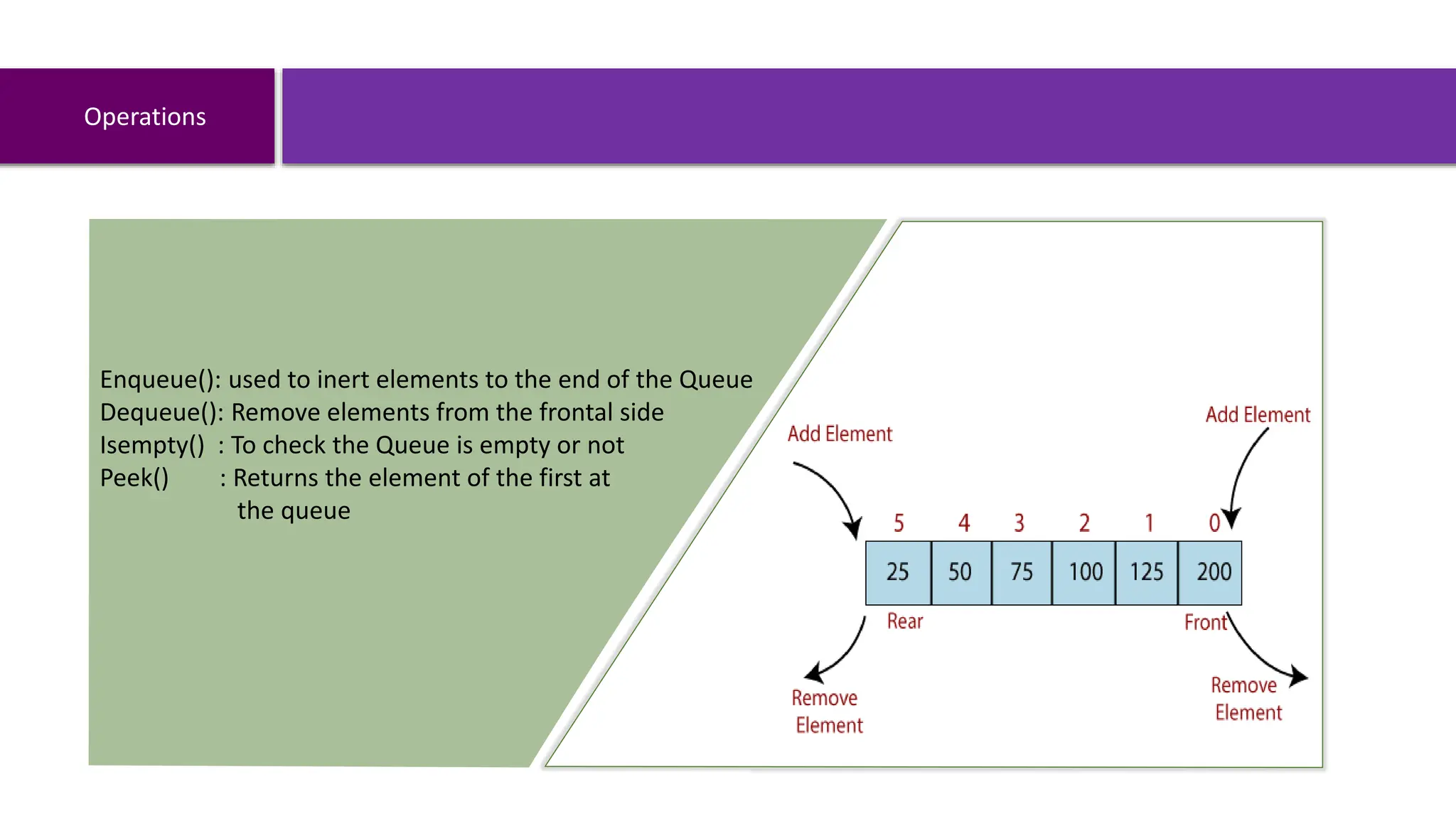
![Linear Queue Algorithms
Dequeue ():
• Check if the queue is empty
(front == rear == -1).
• If empty, display an underflow error.
• Otherwise, increment front by 1.
• Remove the element from the front position in
the array.
Complexity:
The time complexity of insertion, deletion and
peek operation is O(1). If resizing is necessary
(i.e., when the array is full), then the enqueue
operation may take O(n) time in the worst
case, where n is the current size of the queue.
In Linear Queue, an insertion
takes place from one end while
the deletion occurs from another end.
Algorithms of Linear Queue:
Set array – arr[i]
Set front and rear to -1 to signify an empty queue.
Enqueue ():
• Check if queue is full (rear == SIZE - 1).
• If full, display an overflow error.
• Otherwise, increment tail/rear by 1.
• Insert the element at rear position in the array.](https://image.slidesharecdn.com/queue-240426044818-18daba5a/75/QUEUE-in-data-structure-classification-working-procedure-Applications-6-2048.jpg)
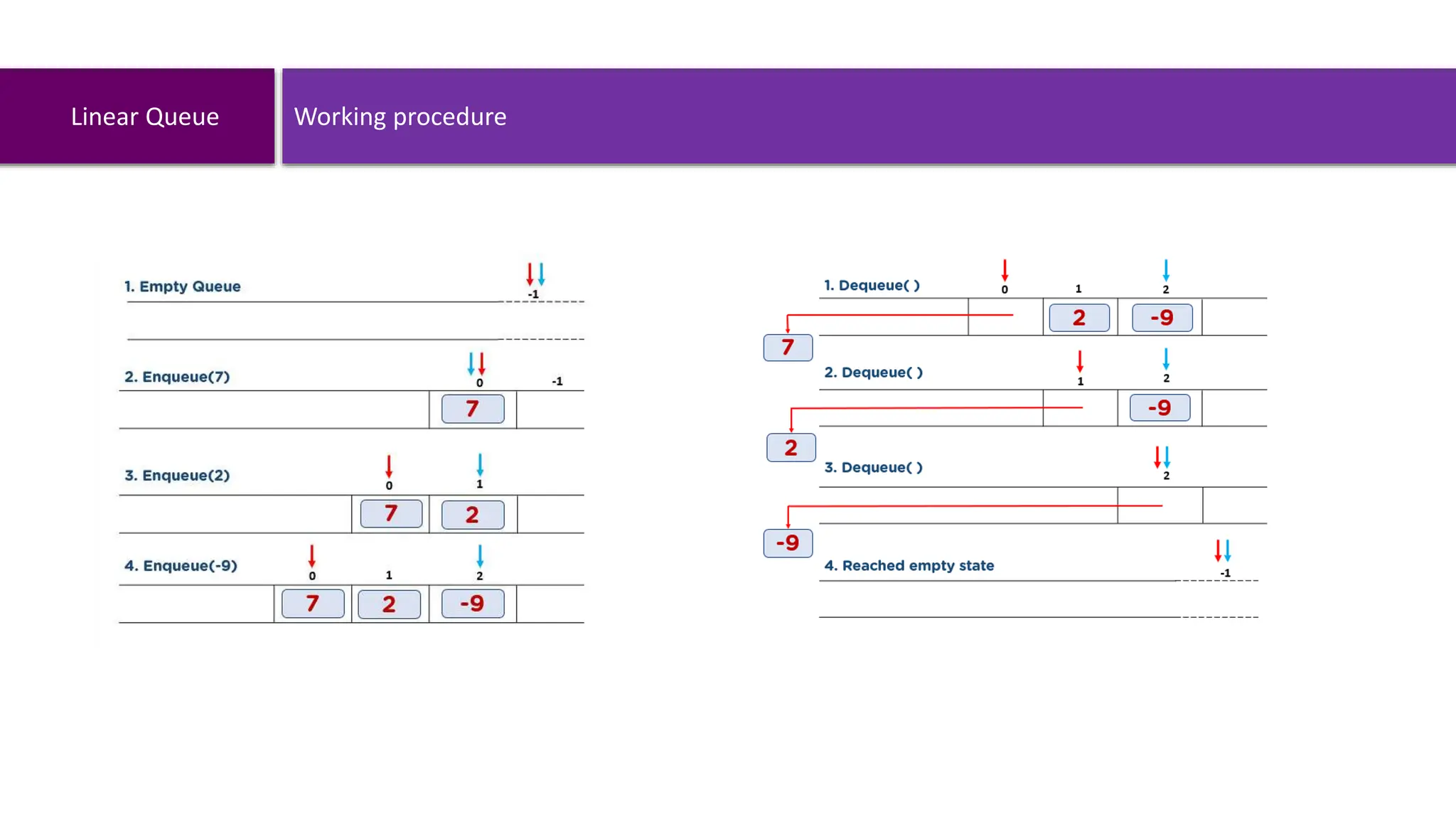

![Priority Queue Algorithms
Dequeue ():
• Remove the element with the highest priority.
• Rearrange the array to fill the gap left by the
removed element.
Complexity:
The time complexity of insertion, deletion is
O(log n).
In Priority Queue elements are arranges based
on their priority (values). Priority queues can be
implemented using Linked List, Heap, Binary search
tree and Array based.
Algorithms of Array-based priority Queue:
Set array – arr[i]
Set front and rear to -1 to signify an empty queue.
Enqueue ():
• Add the element at the end of the array.
• If necessary, reorder the array to maintain the priority
order.
• This can be achieved by comparing the priority of the
newly added element with its parent and swapping if
necessary until the priority order is restored.](https://image.slidesharecdn.com/queue-240426044818-18daba5a/75/QUEUE-in-data-structure-classification-working-procedure-Applications-9-2048.jpg)
